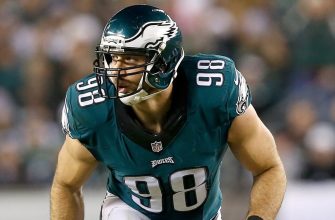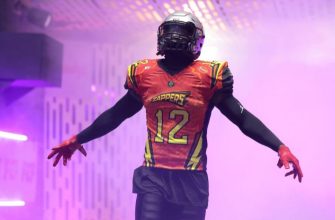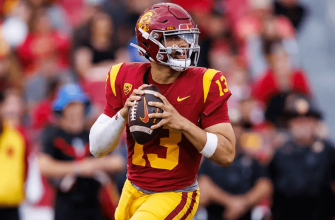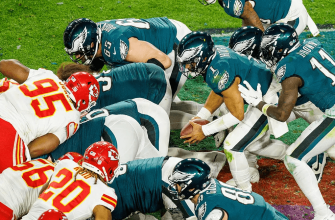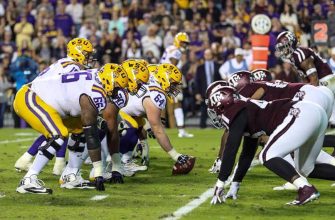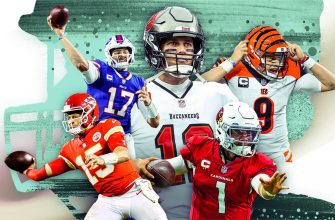Football and baseball cleats may look the same, but they are made for different purposes. This article will explain the differences between the two.
For athletes, having the right gear makes a difference. Football and baseball both have cleats; these shoes give traction and stability on the playing surface.
Football cleats have studded soles, so they can provide grip and support on grassy fields. This makes it easier to make quick movements without losing balance.
Baseball cleats have metal spikes on the sole. This helps players have traction on dirt or clay surfaces. It allows outfielders to run after fly balls and infielders to dig into the ground to get speed.
Odell Beckham Jr. is an example of why it is important to wear the right cleats. He injured his ankle while wearing football cleats on artificial turf in 2017. This showed how essential it is to choose the proper cleats for the sport and playing conditions.
Overview of Football Cleats
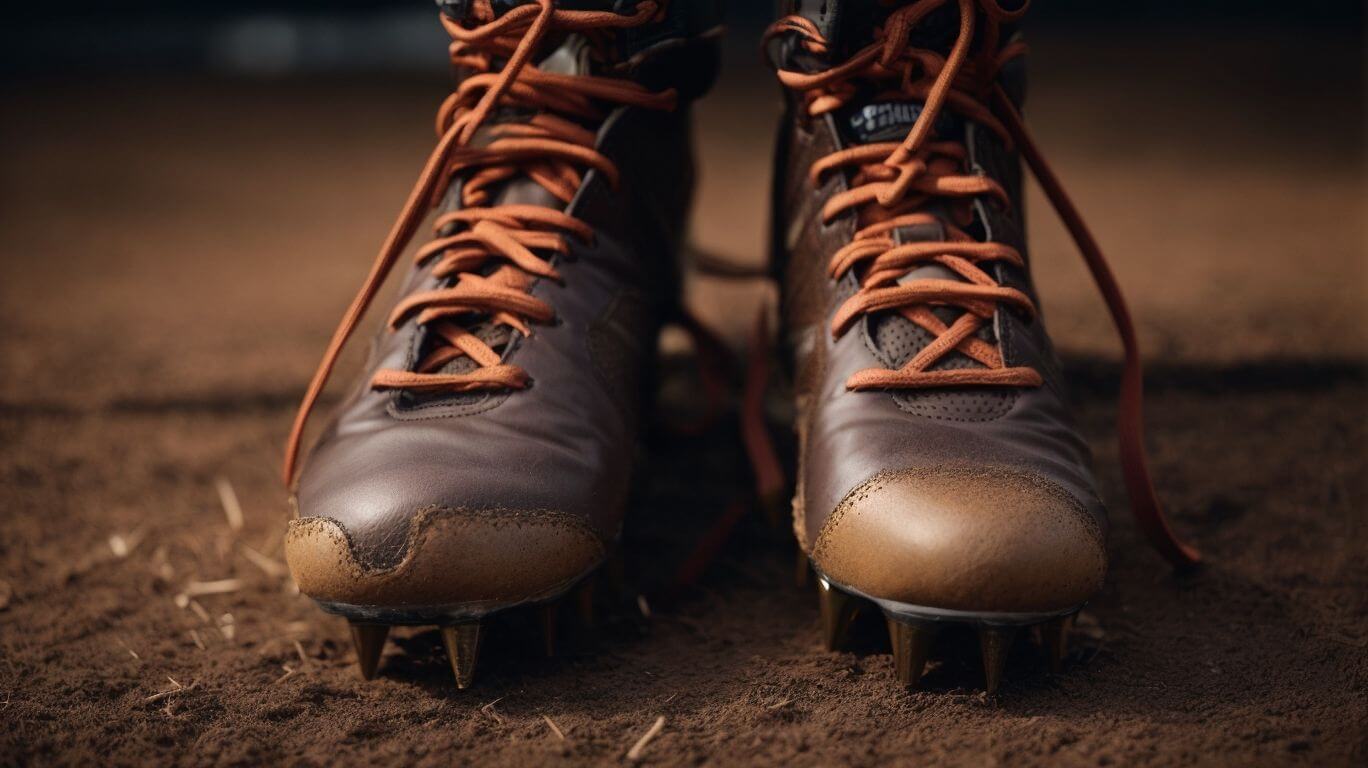
To better understand football cleats, delve into the different types of cleats available, considering the importance of using the right ones for different playing surfaces. Explore the benefits each type of cleat brings to the game, and discover how they enhance performance on the football field.
Different types of football cleats (highlighting the importance of different playing surfaces)
Football cleats are special shoes made for playing football. They provide traction and stability, depending on the surface. There are four types of cleats: Firm Ground (FG), Soft Ground (SG), Artificial Turf (AG), and Indoor (IN).
FG cleats have molded studs or blades and provide grip and traction for firm natural grass. SG cleats have longer metal studs for the softer grass. AG cleats have short rubber or synthetic studs for artificial turf. IN shoes or futsal shoes are best for harder indoor surfaces.
Nike’s Flyknit upper, Adidas’ Boost midsole cushioning, and Under Armour’s ClutchFit technology make cleats more comfortable, fit better, and perform better. The right cleats are important for performance and injury prevention. Wearing wrong cleats can cause slips, lack of grip, discomfort, and accidents.
Overview of Baseball Cleats
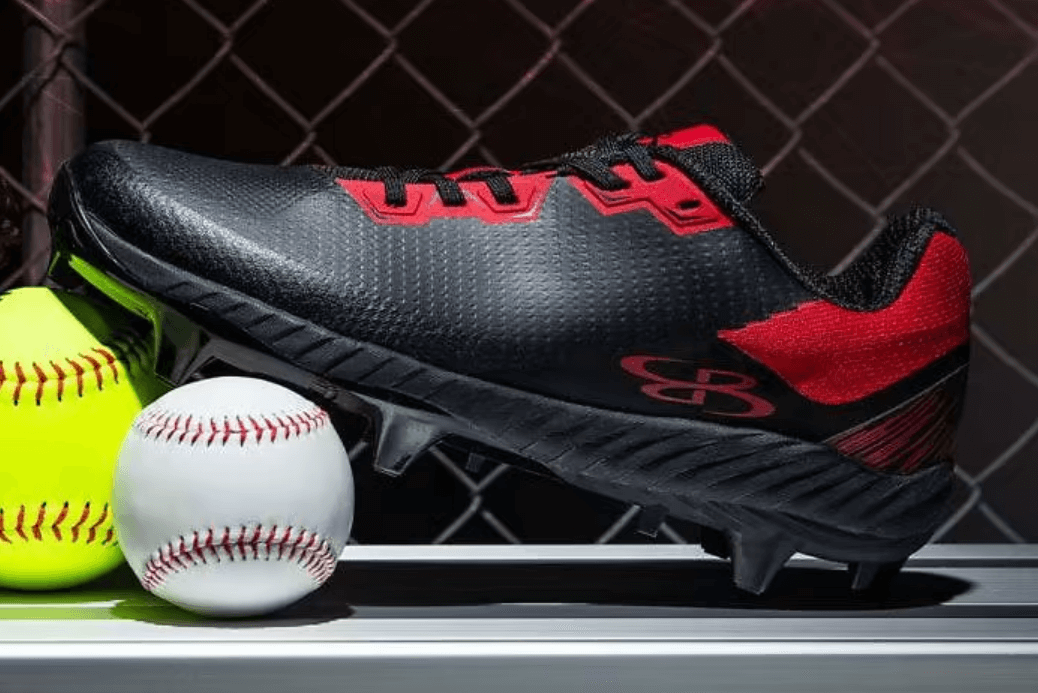
To understand baseball cleats, delve into the different types available for baseball players. Explore their specific features and advantages. Different types of baseball cleats offer solutions tailored to the needs of players.
Different types of baseball cleats (explaining the specific features for baseball players)
Baseball cleats are a must for players’ game-time success. They’re designed with unique features to boost traction, stability, and comfort. Let’s explore the types and their traits!
- Molded Cleats: Rubber or plastic studs are attached to the sole. Great grip on both grass and turf.
- Metal Cleats: Metal studs offer superior grip on dirt and grass. Changeable length depending on field conditions. Not allowed in all leagues.
- Turf Shoes: For artificial turf. Nubs on the outsole give grip without damaging the turf. Comfort and flexibility.
Pick your cleats with playing position, preference, and league rules in mind. Lightweight for speed and agility? Extra ankle support for stability?
Cleats have come a long way. Once, players wore regular sneakers or modified track shoes with metal spikes. Now, cleats are tailored specifically for baseball, with cutting-edge materials and construction. Safety and performance guaranteed!
Comparison of Football and Baseball Cleats
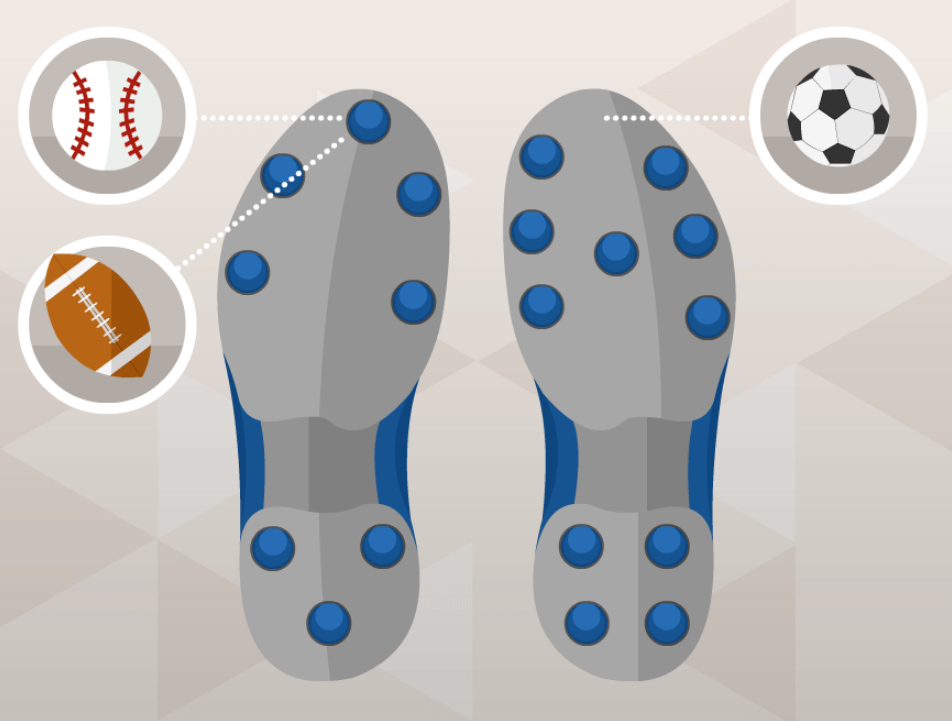
To maximize your athletic performance and safety, equip yourself with the right footwear. Enhance your understanding of football and baseball cleats by delving into their key differences. Discover how these cleats impact your game with a focus on performance and traction on various playing surfaces, design and construction disparities, and their influence on player safety and injury prevention.
Performance and traction on different playing surfaces
Football and baseball cleats have different designs, all with the aim of improving performance and grip on various surfaces.
Here’s what to think about:
- Football cleats have studs or spikes that dig into grass to help players change direction and accelerate without slipping. This is essential for footballers who need to make fast movements during games.
- Baseball cleats have metal or rubber spikes which give stability and stop sliding when running or turning around bases. They also typically have a larger area than football cleats, providing more support for lateral movements.
- For artificial turf, some football cleats have shorter studs or rubber soles. These provide extra grip on turf surfaces and help maximize speed.
- Indoor sports like basketball and soccer need shoes with non-marking rubber soles. These let players pivot easily on hardwood or laminated floors without leaving marks or harming the surface.
It’s important to choose the right cleat according to playing style and position. For example, linemen in football may want sturdy cleats with extra ankle support for blocking and tackling. For baseball, outfielders may pick light but responsive cleats that give fast sprints and agility in the field.
Considering these factors will help athletes improve their performance and reduce injury risk. By picking the right footwear for different surfaces and needs, athletes can get the most out of traction, stability, and efficiency during games.
Design and construction differences
| Football Cleats | Baseball Cleats |
|---|---|
| Taller studs | Shorter studs |
| Sturdier construction | More flexibility |
| Enhanced ankle support | Less ankle support |
| Optimal traction | Quick lateral movements |
Football cleats have taller studs for better grip on grassy fields. Baseball cleats have shorter studs for more stability on dirt and turf surfaces. Football cleats are sturdier for intense contact. Baseball cleats offer flexibility to move quickly. Football cleats have enhanced ankle support. Baseball cleats prioritize agility over ankle support.
A story to illustrate the differences: A running back wearing football cleats changed direction swiftly and scored a touchdown, due to the superior traction of his footwear. This led to his team’s victory.
Impact on player safety and injury prevention
Player safety and injury prevention in sports are of utmost importance. Football and baseball cleats play a key role in reducing the risk of injuries. Let’s explore their influence.
Football Cleats:
- Design ensures stability.
- Limited flexibility for ankle support.
- Adequate padding for impact absorption.
- High-top design offers ankle support.
- Made from durable materials for rough play.
- Different patterns provide multidirectional grip.
Baseball Cleats:
- Firm traction for quick movements.
- More flexible for agile plays.
- Minimal padding for swift movements.
- Low-cut design allows better mobility.
- Lightweight materials enhance speed.
- Metal or plastic studs give stability on grass.
Also, football cleats have reinforced toe caps to guard against kicking-related injuries, whereas baseball cleats have metal or plastic studs to stop slipping on grassy surfaces.
Additionally, the right size and fit of cleats are essential to prevent foot ache and blisters. Players should select cleats that give sufficient arch support to reduce tension on the feet during long periods of play.
Pro Tip: To guarantee player safety and injury prevention, it is recommended to switch worn-out cleats frequently to preserve optimal performance and reduce the risk of accidents.
Difference Between Football And Baseball Cleats
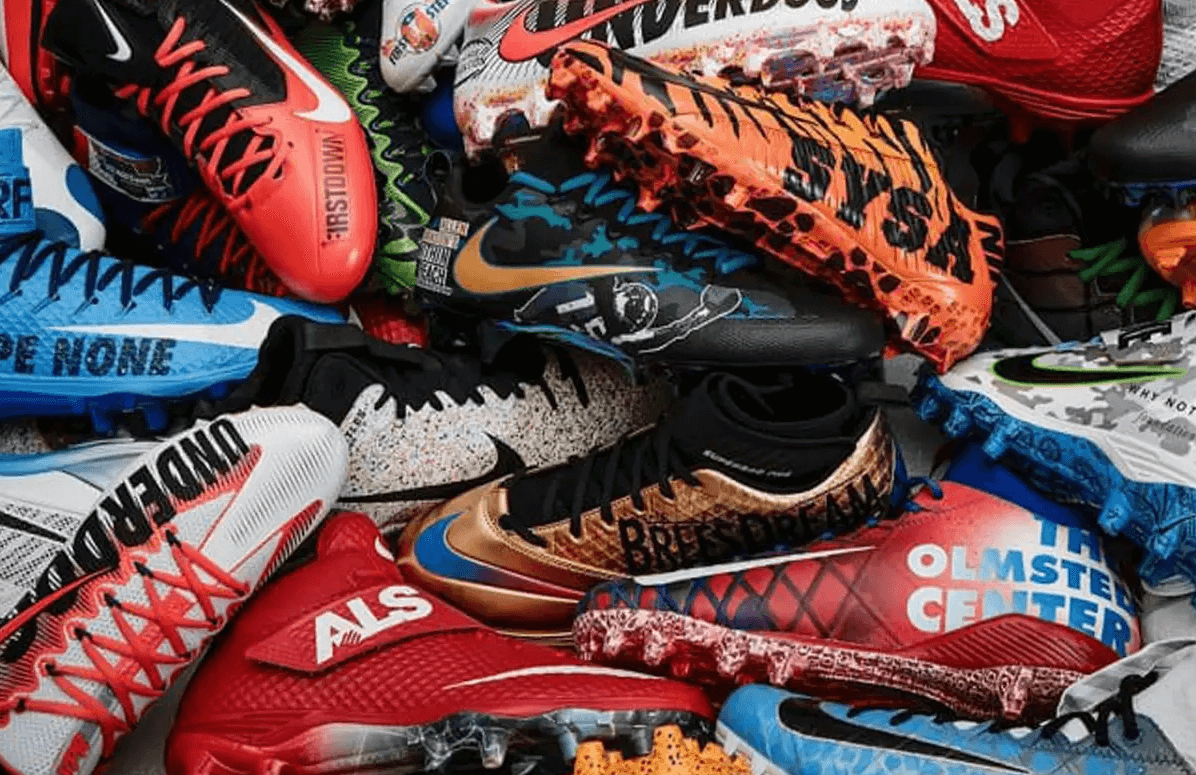
Football and baseball cleats are designed for two distinct sports, each with its unique demands and playing conditions. Here are the key differences between football and baseball cleats:
Playing Surface Compatibility
Football Cleats:
- Football cleats are primarily designed for use on grass or artificial turf surfaces.
- They have longer and more aggressive cleats/studs to provide stability and traction on grassy fields.
- The design of football cleats is optimized for quick directional changes, making them suitable for the stop-and-start nature of football.
Baseball Cleats:
- Baseball cleats are more versatile and can be used on various surfaces, including grass, dirt, and artificial turf.
- They typically feature molded cleats made of rubber or plastic. These cleats provide grip while minimizing the risk of injury to fellow players during slides and close plays.
- Baseball cleats are designed for mobility and agility during base running and fielding, so they are generally low-cut.
Ankle Support and Design
Football Cleats:
- Football cleats often feature high-top designs to provide ankle support and protection.
- This design is intended to reduce the risk of ankle injuries during tackles and physical encounters typical in football.
- Football cleats are sturdier and are built to withstand the high-impact plays of the game.
Baseball Cleats:
- Baseball cleats are usually low-cut to facilitate quick movements, especially during base running and fielding.
- They prioritize lightweight construction and maneuverability over ankle support due to the need for agility and swift footwork on the baseball diamond.
Traction and Cleat Type
Football Cleats:
- Football cleats are equipped with longer cleats or studs that are optimized for stability and grip on grass or turf.
- They are designed to help players push off, make quick directional changes, and maintain balance on the field.
Baseball Cleats:
- Baseball cleats typically have a layout of cleats, often featuring a toe cleat at the front and two to four cleats in the heel area.
- These molded cleats provide traction while allowing for a balance between grip and slide when running the bases and making quick pivots.
In summary, the main differences between football and baseball cleats revolve around their compatibility with playing surfaces, ankle support, and cleat type. Football cleats are tailored for grass or turf, offer ankle support, and have longer cleats for stability. Baseball cleats are more versatile for various surfaces, tend to be low-cut for agility, and feature molded cleats that allow for safe slides and base running.
Choosing the right cleats for your sport is essential to maximize performance and minimize the risk of injury.
Popular NFL Players’ Cleat Choices
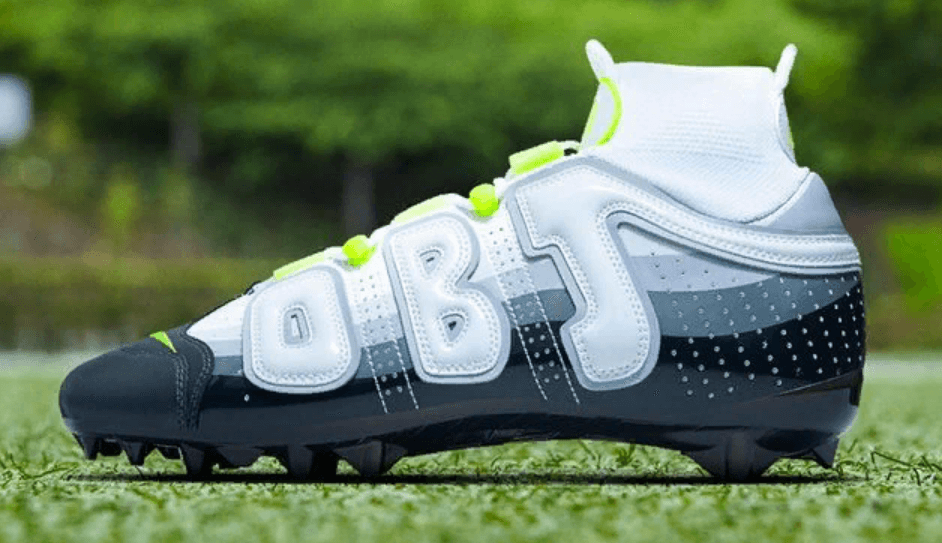
To better understand the cleat choices of popular NFL players, delve into the following sub-sections: Notable NFL players and their preferred cleats for football, and Notable NFL players and their preferred cleats for baseball. Discover the distinct footwear choices these players make for their respective sports and gain insights into their preferred brands and models.
Notable NFL players and their preferred cleats for football
NFL players are famous for their skills on the pitch – but what about the cleats they wear? Let’s explore the brands some of the top players prefer.
Check out this table:
| Player | Preferred Cleat Brand |
|---|---|
| Patrick Mahomes | Under Armour |
| Tom Brady | Nike |
| Aaron Donald | Adidas |
| Saquon Barkley | Puma |
Each player has their own go-to brand. For example, Patrick Mahomes prefers Under Armour. Their cleats are known for being tough and innovative, giving Mahomes the support he needs for his powerful throws.
Tom Brady goes for Nike. The technology and comfort they offer help Brady stay agile and accurate.
Aaron Donald relies on Adidas for speed and traction. This helps him dominate as a defensive tackle.
Lastly, Saquon Barkley chooses Puma. They let him combine style and performance, helping him move through defenses.
Tip: When getting cleats, make sure they’re comfortable, supportive, and have good grip. That way you’ll perform better on the field.
Notable NFL players and their preferred cleats for baseball
Famous NFL players are known for their specific cleat choices when it comes to baseball. Each player has their own preferences, playing styles, and endorsements that influence their decisions.
Manufacturers have taken note of the demand for cleats to maximize athletes’ performance potential. This has led to a range of stylish yet functional options available today.
We can expect the future of NFL players to bring their own unique approach to the combination of sports. They will be sure to leave their mark on competitive athletics with their cleat arsenal!
Frequently Asked Questions
Q: Are football cleats and baseball cleats the same?
A: No, football cleats and baseball cleats are not the same. They are designed differently to provide optimal performance for the respective sports. Football cleats have a sturdier build with more traction for quick direction changes, while baseball cleats have spikes mainly in the front to help with running and base sliding.
Q: Can I use football cleats for baseball?
A: It is not recommended to use football cleats for baseball. Football cleats have longer and thicker spikes that can damage the baseball field. Additionally, the design of football cleats may hamper your performance and agility on the baseball diamond.
Q: Can I use baseball cleats for football?
A: It is generally not recommended to use baseball cleats for football. Baseball cleats have shorter and thinner spikes, which may not provide enough traction on the football field. Additionally, football cleats have specific features to support the demands of the sport, such as ankle support, which baseball cleats may lack.
Q: Can NFL players wear baseball cleats?
A: NFL players are not allowed to wear baseball cleats during games. The NFL has strict equipment regulations to ensure player safety and maintain a level playing field. Football cleats are designed to meet these regulations and provide the necessary support and traction for the game.
Q: Are there any similarities between football and baseball cleats?
A: While football cleats and baseball cleats have distinct designs, there are some similarities. Both types of cleats are intended to provide traction on grass or dirt surfaces. They also often feature materials that offer durability and comfort. However, the overall structure and spike pattern differ to accommodate the unique demands of each sport.
Q: Can I use multi-purpose cleats for both football and baseball?
A: Some manufacturers produce multi-purpose cleats that claim to be suitable for both football and baseball. However, it is generally recommended to use sport-specific cleats for optimal performance. Multi-purpose cleats may compromise certain features necessary for each sport, such as traction or ankle support.
Conclusion
To make an informed decision between football and baseball cleats in the NFL, consider factors such as playing surface, position, and personal preference. These elements will influence your choice and determine the overall performance and comfort you experience on the field. Ultimately, weighing these considerations and understanding the significance of each sub-section will help you reach a conclusive verdict on the football vs baseball cleats debate.
Factors to consider when choosing between football and baseball cleats
Choose football or baseball cleats? Consider the playing surface first. Football? Longer studs for grip on grass. Baseball? Shorter ones for stability on dirt.
Next, check design. Football? Higher cut for ankle support. Baseball? Lower cut for more movement.
Thirdly, pick a cleat for your position. Extra cushioning? Toe protection?
Don’t forget comfort and fit – essential for performance and injury prevention.
Take control now – find the perfect pair of cleats for you! Maximize potential and don’t let uncertainty hold you back.
Final thoughts on the debate between football and baseball cleats
Football and baseball cleats are a long-debated topic. To sum it up, here are three key points:
- It is vital to recognize the particular needs of each sport. Football cleats are designed for traction on grass and turf, with specific blades that help players make swift turns. Baseball cleats use metal or molded spikes for grip on dirt and artificial turf. Knowing the differences helps athletes pick the correct shoes.
- Comfort and fit should not be overlooked. Football players need extra ankle support, while baseball players need a snug fit. Taking foot shape and preferences into account is key for performance and injury prevention.
- Durability is also essential. Football cleats must be sturdy to withstand physical contact, while baseball cleats need durability but not as much impact resistance. Quality materials and construction are vital for either sport.
In addition, personal preference plays a role. Some athletes may prefer one style over the other. Finding the right balance between functionality and preference leads to top performance.
For advice, athletes can turn to experienced coaches or professionals who can offer tailored recommendations. Trying on various brands and models before deciding allows for a perfect fit.


